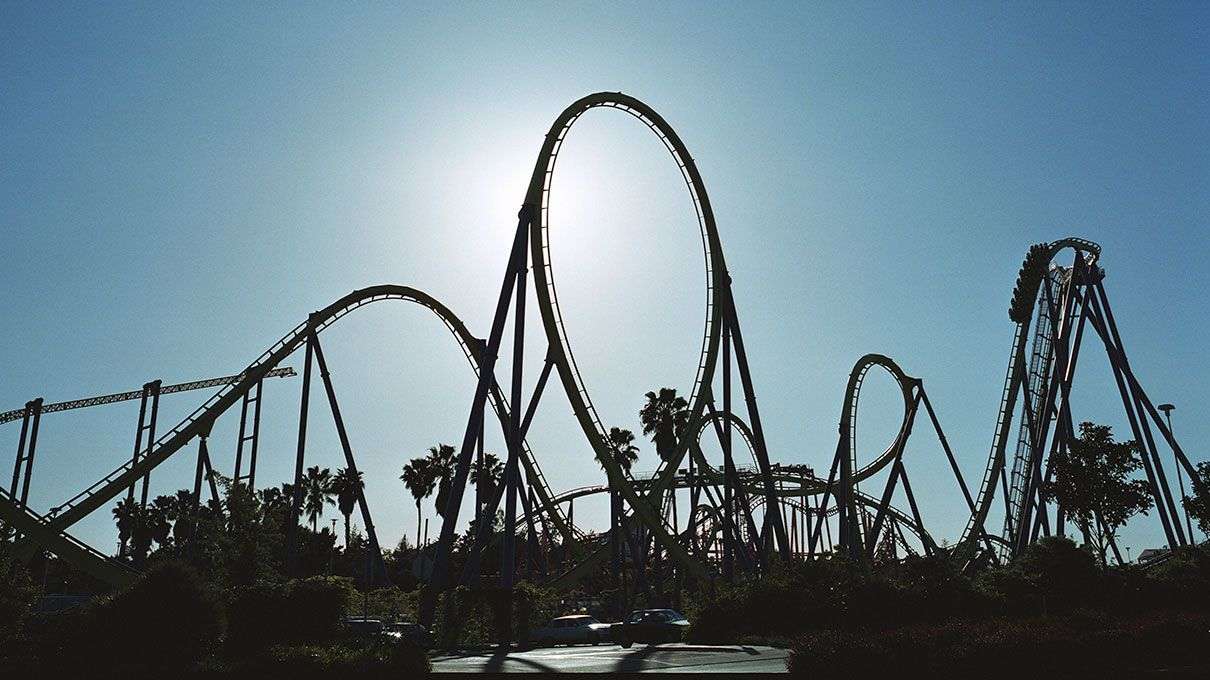
What if a roller coaster could end your life? The Euthanasia Coaster, designed by Lithuanian artist and engineer Julijonas Urbonas, is a hypothetical roller coaster with a dark twist. Created in 2010, this concept aims to provide a humane and euphoric way to end one's life. Standing at 500 meters tall and reaching speeds of 360 kilometers per hour, it subjects riders to lethal G-forces through seven inversions. While never built, it has sparked intense debate about ethics, mortality, and the role of technology in life and death. Is it art, a thought experiment, or something more? Let's explore.
Key Takeaways:
- The Euthanasia Coaster is a thought-provoking roller coaster designed to end life humanely, sparking intense debate and artistic exploration of mortality and ethical dilemmas.
- Designed by Julijonas Urbonas, the Euthanasia Coaster aims to provide a euphoric and elegant end-of-life experience, challenging societal norms and raising profound questions about mortality and technology's role in human life.
The Vision Behind the Euthanasia Coaster
The Euthanasia Coaster is a concept that has sparked curiosity and controversy alike. Designed by Julijonas Urbonas, this roller coaster is not just a thrill ride but a hypothetical machine engineered to end life humanely. Let's dive into the fascinating details.
-
Julijonas Urbonas is the mastermind behind the Euthanasia Coaster. He is a Lithuanian artist and engineer with a background in amusement park design and operation.
-
Purpose and Intent: The coaster aims to provide a humane and elegant means of ending one's life, addressing issues like overpopulation or prolonged suffering.
Design and Mechanics
The Euthanasia Coaster's design is both intricate and chilling. It combines advanced engineering with a profound understanding of human physiology.
-
Design Specifications: The coaster stands 500 meters tall and stretches 7,544 meters in length. It can reach speeds of up to 360 kilometers per hour.
-
Inversions and G-Force: The ride includes seven inversions, each designed to exert a lethal 10 Gs of force on passengers.
-
Mechanism of Action: A steep drop followed by loops increases gravitational force, causing g-force-induced loss of consciousness (GLOC) and eventually cerebral hypoxia.
-
Health Monitoring System: The coaster features a health monitoring system to ensure passengers do not survive the ride.
The Experience
Urbonas describes the ride as both elegant and euphoric, aiming to make the fatal journey meaningful.
-
Elegance and Euphoria: The ride combines physiological and aesthetic pleasure, celebrating the limits of the human body.
-
Reflection Time: At the top of the hill, passengers have time to contemplate their life before proceeding.
-
Button Press: Passengers must press a button to continue the ride, symbolizing their consent and final decision.
Public and Cultural Impact
Since its inception, the Euthanasia Coaster has been a topic of intense debate and has even made its way into popular culture.
-
Public Display: First displayed at the HUMAN+ exhibition in Dublin in 2011, it has since been showcased in various locations.
-
Pop Culture References: The coaster has been referenced in music and literature, including a song by Major Parkinson and a novel by Sequoia Nagamatsu.
-
Artistic Intent: Urbonas's work is seen as a provocative piece of art, challenging societal norms and raising ethical questions.
Ethical and Legal Considerations
The Euthanasia Coaster raises significant ethical and legal concerns, making it a highly debated topic.
-
Ethical Considerations: The concept involves intentionally causing death, a morally and legally contentious issue.
-
Legal Implications: While euthanasia is legal in some countries, using a roller coaster for this purpose is not legally recognized anywhere.
Scientific and Practical Aspects
The coaster's design is grounded in scientific principles, but its practical feasibility remains questionable.
-
Scientific Backing: The design relies on principles from space medicine, mechanical engineering, and material technologies.
-
Public Reaction: Reactions range from viewing it as thought-provoking art to finding it disturbing and morally reprehensible.
-
Practical Feasibility: The scale and complexity of the coaster make it unlikely to be implemented in reality.
Comparisons and Historical Context
The Euthanasia Coaster is not the first concept to combine technology with euthanasia, fitting into a broader historical context.
-
Comparison to Other Methods: Unlike lethal injection or medication, the coaster offers a unique and dramatic approach to ending life.
-
Historical Context: The idea of using technology to facilitate death has existed throughout history, from ancient rituals to modern practices.
Controversy and Criticism
The Euthanasia Coaster has faced criticism for its macabre nature and potential for misuse.
-
Controversy and Criticism: Critics argue that the device could be exploited for nefarious purposes, undermining ethical considerations.
-
Euphoric Experience: The ride aims to create a sense of liberation and acceptance before death, a concept both fascinating and unsettling.
Personal and Psychological Aspects
The coaster also touches on personal views on death and the psychological aspects of mortality.
-
Personal Views on Death: Urbonas's agnostic view on the afterlife and fear of slow death influenced the design.
-
Reflection on Life: The reflection time at the top of the hill adds a psychological layer, making it an existential reflection on one's life.
Engineering and Aesthetics
The coaster's design is not just functional but also aesthetically pleasing, adding another layer of complexity.
-
Elegance in Design: The sleek design and precise engineering make the structure itself elegant.
-
Scientific Interest: Scientists and engineers are intrigued by the innovative design and underlying scientific principles.
Social Media and Public Perception
The Euthanasia Coaster has garnered significant attention on social media, sparking widespread discussion.
-
Social Media Impact: The scale model showcased in 2011 sparked significant interest on social media.
-
Public Endorsement: Some describe it as a technically intricate solution akin to other forms of institutional killing.
Ethical Dilemmas and Artistic Provocation
The coaster raises numerous ethical dilemmas and serves as an artistic provocation.
-
Ethical Dilemmas: It challenges traditional notions of dignity in death, consent, and agency.
-
Artistic Provocation: Urbonas aims to stimulate discussion and reflection on the human condition through provocative works.
Novelty and Institutionalization
The Euthanasia Coaster stands out for its unique approach and the potential scale of its implementation.
-
Novelty in Institutionalization: If adopted, the coaster would require significant resources and infrastructure.
-
Euphoric and Elegant Experience: The ride aims to make the fatal journey pleasing and meaningful.
Reflection and Final Thoughts
The Euthanasia Coaster is a thought-provoking concept that challenges societal norms and raises profound questions about mortality.
-
Reflection on Life: The reflection time at the top of the hill underscores the importance of personal reflection in the face of mortality.
-
Conclusion: The Euthanasia Coaster serves as a catalyst for discussion on euthanasia, assisted suicide, and the role of technology in human life.
-
Complex Ethical Considerations: The coaster's design and implications offer a rich tapestry for exploration and debate.
-
Dual Nature of Beauty and Horror: The Euthanasia Coaster exemplifies the complex interplay between beauty and horror in human creations.
Final Thoughts on the Euthanasia Coaster
The Euthanasia Coaster is a wild mix of art, science, and ethics. Designed by Julijonas Urbonas, this hypothetical roller coaster aims to provide a humane, euphoric end to life. With its towering height, intense G-forces, and elegant design, it raises big questions about how we view death and technology's role in it. While some see it as a thought-provoking piece of art, others find it disturbing. The coaster challenges our ideas about dignity, consent, and the ethics of euthanasia. Whether you view it as a macabre concept or a fascinating commentary, it undeniably sparks deep conversations about mortality and the human experience. The Euthanasia Coaster remains a powerful symbol of the complex interplay between life, death, and innovation.
Frequently Asked Questions
Was this page helpful?
Our commitment to delivering trustworthy and engaging content is at the heart of what we do. Each fact on our site is contributed by real users like you, bringing a wealth of diverse insights and information. To ensure the highest standards of accuracy and reliability, our dedicated editors meticulously review each submission. This process guarantees that the facts we share are not only fascinating but also credible. Trust in our commitment to quality and authenticity as you explore and learn with us.


